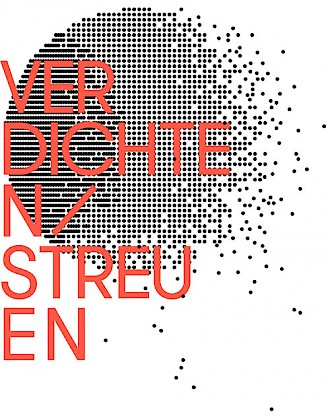
Annual Topic 2016/17
While the operations of opening and closing are still closely linked with the logic of differentiation, the second phase of the study will see a focus on operations that obey the logic of attachment and detachment, the waxing and waning of forces of attraction. They follow statistical distributions rather than geometrical or topological principles, and they should be conceived more as entropic processes/ processes for the reduction of entropy, or as states of varying intensity.
Firstly, processes of condensing will be observed, i.e. transitions from loose to firm connections. Again, this can begin with phenomena of texture and textiles, for example with the creation of the bond that makes the threads interweave into fabric. A related area of study is image processes, such as those in which accumulation or unequal distribution gradually makes figures arise from the background of an unstructured, smooth surface texture. This can occur as an iconizing operation, for example in images of water and other surfaces (sand, snow etc.). The same can apply to changing levels and uses of light and sound in fade-ins and fade-outs, to shifts between sharp and soft focus, and to numerous transitional forms between transparency and opacity, which bring about a gradual transition between perceptibility and imperceptibility. From here the relationship between a (single, isolatable) object and the surrounding atmosphere, between milieu and figure, between situation and action, can then be described as condensation or compression.
Another phenomenon that will be examined here, in association with recent theories of the crowd, is concentrations of individuals and other processes of concentration, especially in their contemporary, media-influenced forms (“smart mobs”), characterized by relative instantaneity and instability. Here the condensed mass must be distinguished from the process of condensation specific to the “multitude”, which, even if it develops an operativity of its own, does not involve any fusion into a uniform collective body (collective intelligence/swarm intelligence). Further important topics in this context are forces of attraction and attachment, the fixing of attention, affective impacts and attractions in all their modes of efficacy, extending to emotional regimes. Processes of mimicry and of assimilation of objects and figures to surroundings and background would be processes complementary to condensation, which again create intermediate states between presence and absence. The last point to be examined here follows a temporal logic: the accumulation of events, e.g. events occurring in increasingly close succession.
One phenomenon particularly useful for the study of attachment as an ontological operation is the transitional object. “Subjectively” created by the child from “objectively” found objects, transitional objects such as the corner of a blanket, a cloth or a rag doll are, for a certain period of time, a bridge from the subjective to the objective world and back again. The transitional object is the first regular object that “is simultaneously not-me and never entirely not-me”. Transitional objects perform this bridging function because they are hybrids of sign and thing: as material things, they not only “signify” the mother’s breast, but provide a substitute for it. They share this structure with the fetish, which can become a transitional object (but does not necessarily do so). Because the sign is, in this case, not conventional, but is fused into the object’s materiality, the transitional object has a magical effect.
In all these things, the counter-movement to condensing is the dispersion, spreading out and scattering of a figure or object into the surrounding space, the de-differentiation of a form created by demarcation, the gradual undoing of a firm connection, the weakening and loosening of forces of attachment, attractions and affective impacts. It can lead, on the one hand, to dissolution and deletion, but also, on the other hand, to the gradual emergence of a second figure or object, which then detaches from the first one, eventually becoming completely separate from it (and, little by little, distinguishable from it).